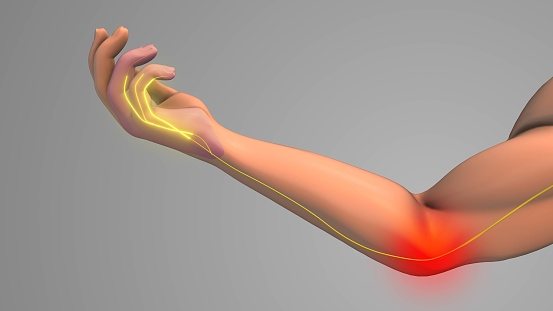Seven Must-Know Facts About Therapeutic Nerve Blocks to Ease Your Pain
Nerve pain is one of the most debilitating pains to experience. It can feel like a sharp, burning, itching pain that moves from one part of your body to another. No matter how hard you try to find relief, the pain may persist. Eventually, nerve pain can diminish your quality of life and interfere with your daily routine. If you’re struggling to find relief from nerve pain, you may be a good candidate for therapeutic nerve block injections. Before talking to your doctor, read on to learn seven important facts about using nerve blocks to ease pain.
What Is a Therapeutic Nerve Block Injection?
A therapeutic nerve block injection is a minimally invasive treatment option for nerve pain. Your doctor will inject a substance directly into your nerve or a group of nerves to relieve pain. The substance usually consists of a local anesthetic and a steroid. This works by blocking nerve signals to the brain and can be used to manage pain caused by nerve damage, neuropathy, injury, surgery, and more.

Why Is a Therapeutic Nerve Block Used?
Your doctor may recommend a nerve block if other treatment methods have failed or if they don’t fully understand the cause of your pain. There are three common types of nerve blocks, and they are used for different purposes:
- Therapeutic Nerve Blocks – A therapeutic nerve block interrupts pain signals that travel from your nerves to your brain. Your doctor may use these injections to help you manage chronic pain caused by sciatica, osteoarthritis, complex regional pain syndrome, fibromyalgia, neuropathy, and other conditions.
- Diagnostic Nerve Blocks – A diagnostic nerve block can help your doctor identify the underlying cause of your pain. By injecting different groups of nerves, they can see which injection offers you relief. This information can help guide them in designing a long-term treatment plan.
- Anesthetic Nerve Blocks – An anesthetic nerve block can be used as a preventive treatment measure before or after you undergo surgery or a procedure. The injection can prevent pain from developing after surgery or help you better manage post-surgical pain.
What Kinds of Pain Can Therapeutic Nerve Blocks Alleviate?
Nerve blocks can address many different types of pain. They are commonly used to offer short-term or long-term relief from:
- Pain caused by an injury
- Chronic neck, back, and leg pain
- Pain associated with labor and childbirth
- Arthritis pain
- Chronic headaches
- Musculoskeletal pain
- Neuropathic pain
- Chronic or severe migraines
- Cluster headaches
- Cancer pain
- Phantom limb pain
- Pre- or post-surgical pain
What to Expect From the Therapeutic Nerve Block Procedure
Before the procedure, your doctor will clean the injection site area and numb it using a local anesthetic. They will use an imaging technique like an x-ray, ultrasound, or fluoroscopy to guide the needle to the correct nerve or nerve group. An injection of a local anesthetic, steroid, or both will be injected near the nerve. You will then be closely monitored for 30-45 minutes for side effects. Afterward, you may have temporary numbness or weakness in the treatment area. You should avoid strenuous activities for 24 hours and then return to your normal routine.
Who Is a Good Candidate for a Diagnostic or Therapeutic Nerve Block?
A diagnostic nerve block can help your doctor determine the root cause of your pain. By identifying the specific nerves that are causing you pain, they can better determine how to treat you. The results of a nerve block injection can guide your doctor in finding the most effective long-term treatment option. Other people who can benefit from therapeutic nerve blocks are people who:
- Have diabetes
- Are on blood thinners
- Have a heart condition
- Are experiencing an infection
- Can’t find relief from pain medication or more conservative treatment options
- Have severe, localized pain
- Don’t have a clear underlying cause for pain
How Long Does a Nerve Block Last?
How long a nerve block injection lasts may depend on the type of injection and the medication that is used, as well as your age, condition, lifestyle, overall health, and many other factors. In general, the nerve block’s efficacy may last between 12-36 hours. For some people, the results last two or three days. Short-acting nerve blocks last up to eight hours, and long-acting nerve blocks can last up to three days. Continuous nerve blocks can last three days or longer.
Risks and Benefits of a Nerve Block
Like any medical procedure, a nerve block injection can have risks or side effects. For most people, these side effects are mild and temporary. The most common ones are:
- Infection at the injection site
- Bleeding at the injection site
- Accidental delivery of the medication into your bloodstream
- Unexpected spread of the medication to other nerves or your spinal canal
Most people find that the benefits of a nerve block injection far outweigh the potential risks. The biggest benefits are:
- Temporary or permanent pain relief
- Temporary or permanent reduction of inflammation in the affected nerves
- Providing a diagnosis for the cause of chronic or severe pain
Make an Appointment for Therapeutic Nerve Blocks
If you are suffering from chronic pain or nerve pain and can’t find relief from traditional treatment options or medications, we can help. At Texas Institute of Pain and Spine, we offer holistic, highly individualized chronic pain treatment and management programs. We can help you determine the root cause of your pain, offer lasting relief, and guide you in making lifestyle choices that improve your overall health and reduce your risk of future pain. Call us now or contact us online to schedule a consultation and find out if you are a good candidate for therapeutic nerve blocks in Pearland, TX.
